Empress |
|||||||||||||||||||||||||||||||
 |
 |
||||||||||||||||||||||||||||||
Knitted long circle jacket in 1 strand DROPS Air and 1 strand DROPS Brushed Alpaca Silk. The piece is worked in the round in a circle with texture. Sizes S - XXXL.
DROPS 194-17 |
|||||||||||||||||||||||||||||||
|
------------------------------------------------------- EXPLANATIONS FOR THE PATTERN: ------------------------------------------------------- RIDGE/GARTER STITCH (worked in the round): 1 ridge = 2 rounds. Knit 1 round and purl 1 round. RIDGE/GARTER STITCH (worked back and forth): 1 ridge = knit 2 rows. PATTERN: See diagrams A.1 to A.4. Choose diagram for your size. The diagrams show all the rows in the pattern seen from the right side! DECREASE TIP (for sleeves): All decreases are made from the side in purl! Decrease 1 stitch by purling 2 stitches together ------------------------------------------------------- START THE PIECE HERE: ------------------------------------------------------- CIRCLE JACKET - SHORT OVERVIEW OF THE PIECE: The piece is worked in the round in a circle from the middle of the back outwards. Change to circular needle(s) when necessary. Then work back and forth with short rows for the front pieces and down the back. The sleeves are worked top down in stockinette stitch with the wrong side out. Because of the weight of the yarn, the garment will stretch somewhat after use. CIRCLE JACKET: CIRCLE: Cast on 8 stitches with double pointed needles size 8 mm = US 11 and 1 strand Air and 1 strand Brushed Alpaca Silk (= 2 strands). Divide the stitches between 4 needles so that there are 2 stitches on each. Insert a marker thread at the beginning of the round. Allow the marker thread to follow your work onwards. Work pattern in the round according to A.1 – choose diagram for your size, a total of 8 times on the round. REMEMBER THE KNITTING GAUGE! When A.1 is finished, there are 48 stitches on the round. Now work pattern as follows: Work A.2 – choose diagram for your size, a total of 16 times on the round. After the next-to-last round in A.2 there are 128-128-144-144-160-160 stitches on the round. The last round in A.2 is worked as follows: Work the first 39-39-45-45-49-49 stitches (there is now 1-1-0-0-1-1 stitch left in the last repeat of A.2 worked), insert a new marker thread here (follows your work onwards and is later used when you work short rows from the front pieces and down the body on the back piece), bind off the next 20-21-22-23-24-25 stitches (= armhole), work the next 49-47-55-53-63-61 stitches, bind off the last 20-21-22-23-24-25 stitches (= armhole). The piece measures approx. 39-39-41-41-47-47 cm = 15¼"-15¼"-16⅛"-16⅛"-18½"-18½" in diameter. The next round is worked as follows: Work A.3 – choose diagram for your size (= 8-8-9-9-10-10 stitches on the first round in the diagram) a total of 16 times on the round and at the same time cast on 20-21-22-23-24-25 new stitches on the needle where the stitches were bind off for the armholes = 128-128-144-144-160-160 stitches. Continue in the round with A.3 until the whole diagram has been completed in height. There are now 304-304-352-352-400-400 stitches on the round. The piece measures approx. 87-87-97-97-111-111 cm = 34¼"-34¼"-38¼"-38¼"-43¾"-43¾" in diameter. Cut the strand. Place the first 94-94-110-110-124-124 stitches on the round (= stitches between the 2 marker threads) on a thread. FRONT PIECES AND DOWN THE BODY: There are now 210-210-242-242-276-276 stitches for the front pieces and down the body on the back piece. Start from the right side after the second marker thread and work short rows back and forth for the front pieces and down the body on the back piece as follows: ROW 1 (right side): Purl over purl and work A.4 (= 3 stitches) over each cable until there are 3 stitches left before the next marker thread (i.e. start of round), turn. ROW 2 (wrong side): Work back until there are 3 stitches left before the marker thread, turn. ROW 3: Purl over purl and work A.4 over each of the cables until there are 6 stitches left before the marker thread, AT THE SAME TIME increase 1 purled stitch after each cable/A.4, turn. ROW 4: Work back until there are 6 stitches left before the marker thread, turn. Continue back and forth like this by working 3 fewer stitches than the previous row and increase 1 stitch after each cable/A.4 every 4th row until you have worked 7 repeats of A.4 in height (= 42 rows). The piece measures approx. 72-72-77-77-84-84 cm = 28⅜"-28⅜"-30⅜"-30⅜"-33"-33" from the middle of the circle and down mid back. The last row is worked from the wrong side. Do not cut the strand. Insert a marker thread in the middle cable/A.4 mid back of jacket. Continue back and forth with pattern as before over the bottom of the left front piece as follows: ROW 1 (right side): Work until there are 4 stitches left before the cable/A.4 with the marker thread mid back, turn. ROW 2 (wrong side): Work until there are 3 more stitches left before the marker thread than the previous row (start of round), AT THE SAME TIME increase 1 purled stitch after each cable/A.4, turn. ROW 3 (right side): Work until there are 4 more stitches than last time left before the cable/A.4 with the marker thread mid back, turn. ROW 4 (wrong side): Work until there are 3 more stitches before the marker thread than the previous row, turn. Continue back and forth with pattern and increase after each cable/A.4 every 4th row until you have worked 3 repeats of A.4 in height (= 18 rows). Cut the strand. Start from the right side and after A.4/mid back and work short rows back and forth over the bottom of the right front piece in the same way, but reversed, i.e. each row from the wrong side is turned when there are 4 more stitches before the cable/A.4 with the marker thread mid back than the previous time and on each row from the right side is turned when there are 3 more stitches left than the previous time. EDGE: Place all stitches on the circle back on circular needle and work 2 RIDGES – read description above, around the whole circle. Bind off, but to avoid the bind-off edge being tight you can make 1 yarn over after approx. each 5th stitch - the yarn overs are bind off as normal stitches. SLEEVE: The sleeve is worked in stockinette stitch with the wrong side out (reversed stockinette stitch). Cast on 11-11-12-12-14-14 stitches with circular needle size 8 mm = US 11 and 1 strand Air and 1 strand Brushed Alpaca Silk (= 2 strands). Work stockinette stitch back and forth, AT THE SAME TIME cast on new stitches at the end of each row in each side as follows: Cast on 2 stitches 2 times, 1 stitch 3-4-5-6-6-7 times, 2 stitches 1 time and 4 stitches 1 time = 37-39-42-44-46-48 stitches. THE PIECE IS NOW MEASURED FROM HERE. Continue back and forth with stockinette stitch and 1 edge stitch in GARTER STITCH – read description above, in each side. When the piece measures 4 cm decrease 1 stitch inside the 1 edge stitch in garter stitch in each side – read DECREASE TIP. Decrease like this every 7-6-6-5-5-4 cm = 2¾"-2⅜"-2⅜"-2"-2"-1½" a total of 6-7-7-8-8-9 times = 25-25-28-28-30-30 stitches. When the piece measures 42-42-40-40-39-39 cm = 16½"-16½"-15¾"-15¾"-15¼"-15¼" increase 7-7-4-9-7-7 stitches evenly on row = 32-32-32-37-37-37 stitches. Change to circular needle size 7 mm = US 10,75. Work rib, starting from the side with purl (reversed stockinette stitch/the wrong side out) as follows: 1 edge stitch in garter stitch (knit 2, purl 3) until there is 1 stitch left, 1 edge stitch in garter stitch. When the rib measures 5 cm = 2" bind off with knit over knit and purl over purl. The sleeve measures approx. 55-56-55-56-56-57 cm = 21⅝"-22"-21⅝"-22"-22"-22½" from the sleeve cap down. Work the other sleeve in the same way. ASSEMBLY: Sew sleeves to body inside the bind-off/cast-on edge. Sew sleeve seams. Make sure that the seam is not tight. |
|||||||||||||||||||||||||||||||
Diagram explanations |
|||||||||||||||||||||||||||||||
|
|||||||||||||||||||||||||||||||
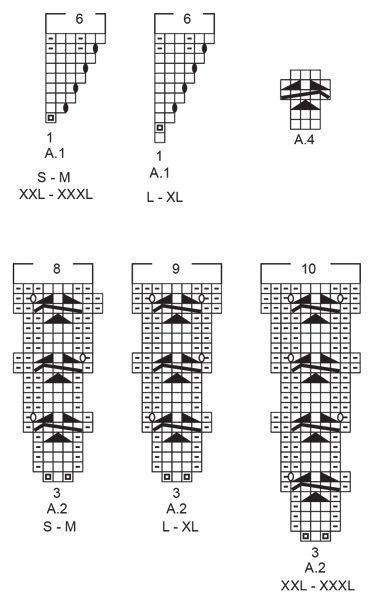
|
|||||||||||||||||||||||||||||||
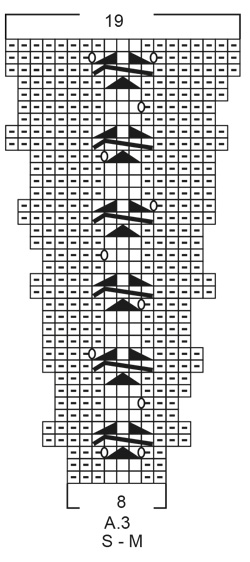
|
|||||||||||||||||||||||||||||||

|
|||||||||||||||||||||||||||||||
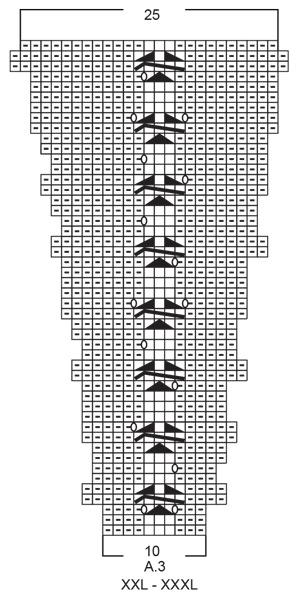
|
|||||||||||||||||||||||||||||||
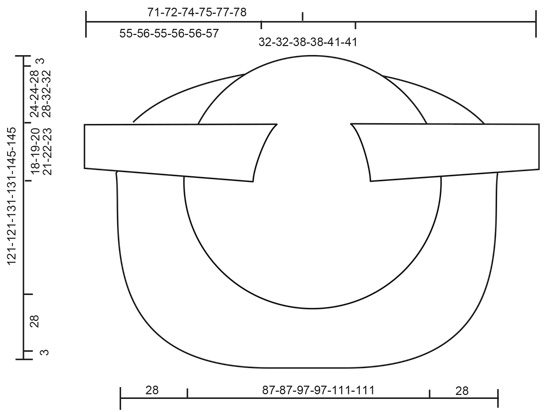
|
|||||||||||||||||||||||||||||||
|
Have you made this or any other of our designs? Tag your pictures in social media with #dropsdesign so we can see them! Do you need help with this pattern?You'll find tutorial videos, a Comments/Questions area and more by visiting the pattern on garnstudio.com. © 1982-2024 DROPS Design A/S. We reserve all rights. This document, including all its sub-sections, has copyrights. Read more about what you can do with our patterns at the bottom of each pattern on our site. |
|||||||||||||||||||||||||||||||







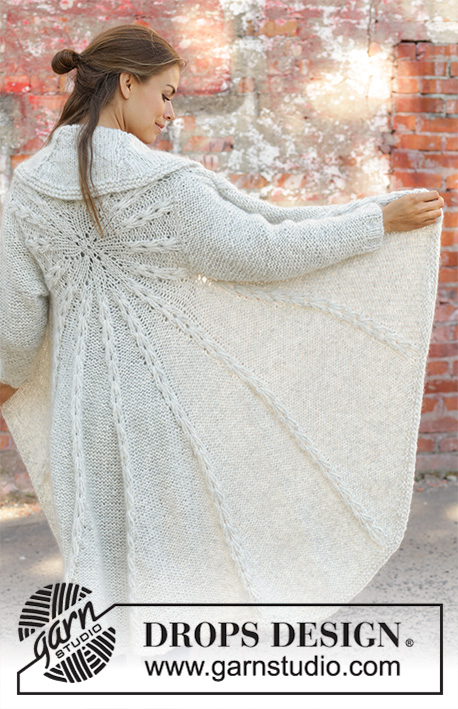
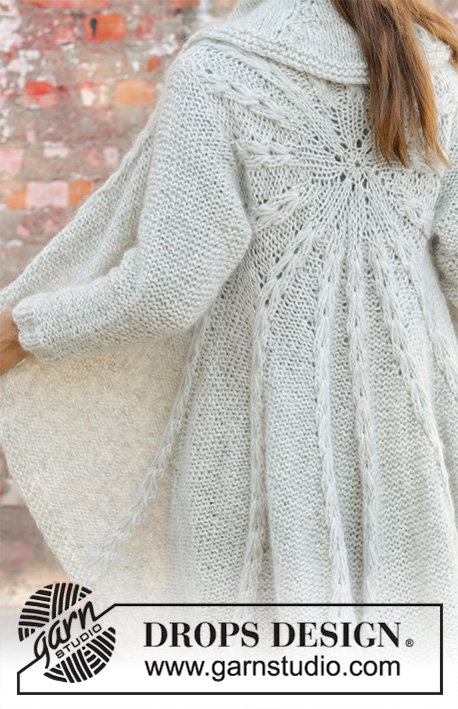




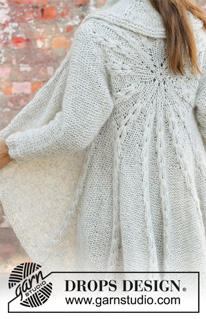
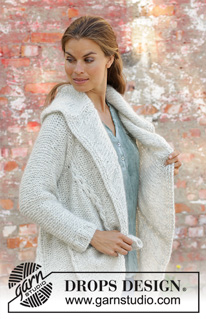































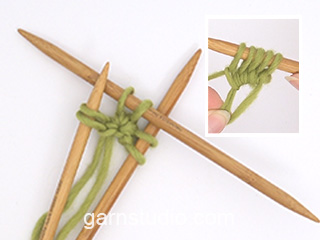


























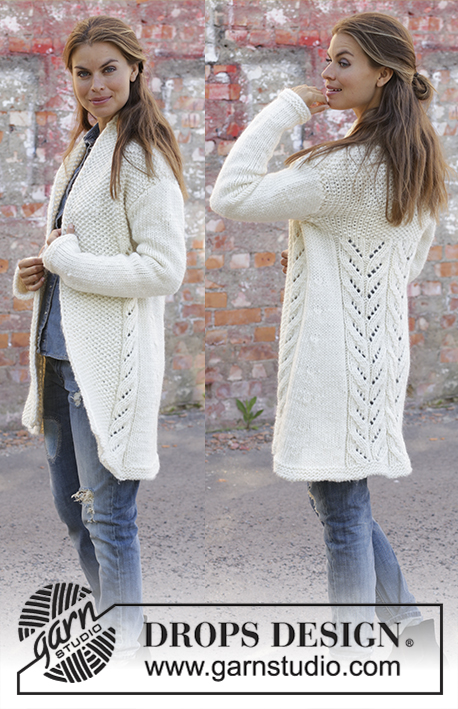


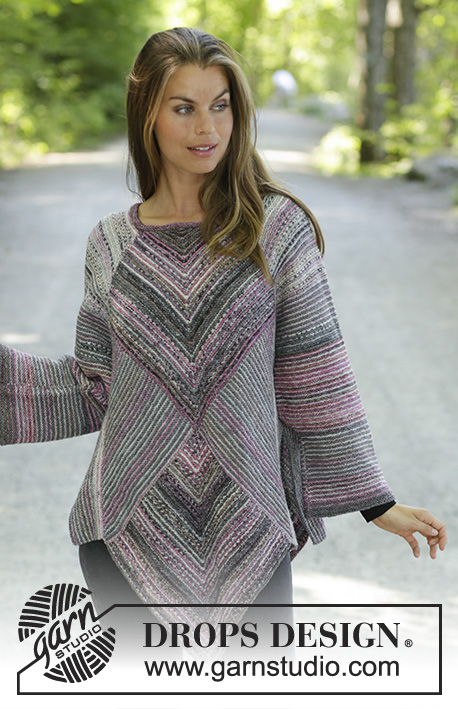






Comments / Questions (174)
Hat jemand die Jacke schon fertig? Ich würde gerne wissen, ob sie fusselt und/oder schnell Knötchen bildet.
20.10.2019 - 17:21DROPS Design answered:
Liebe Anja M, hier lesen Sie mehr über Fussseln und lesen Sie auch diese allgemine Tipps zur Garnpflege. Ihr DROPS Laden wird auch mehr Tipps für Sie haben. Viel Spaß beim stricken!
21.10.2019 - 11:08Bonjour, les 110 mailles que j'ai mis de côté sur un fil quand dois-je les reprendre; Merci pour votre réponse
13.10.2019 - 16:54DROPS Design answered:
Bonjour Mme Lelarge, les 110 mailles mises en attente avant les rangs raccourcis sont reprises pour la bordure, quand tous les rangs raccourcis sont terminés: on va alors tricoter les mailles restant sur les aiguilles (deux devants), les 110 m mises en attente et les mailles mises en attente lors des rangs raccourcis en haut de chaque devant puis en bas quand on a fait les devants séparément. Bon tricot!
14.10.2019 - 10:30Si j'ai bien compris pour les raccourcis je les laisse tous en attente et je les reprend avec ceux des devants quand ils sont terminés pour faire les tours au point mousse pour la finition
12.10.2019 - 17:55DROPS Design answered:
Bonjour Françoise, tout à fait, vous tricotez de moins en moins de mailles à chaque fois, et, quand tous les rangs raccourcis sont terminés, on reprend toutes les mailles mises en attente pendant les rangs raccourcis + celles mises en attente au début des rangs raccourcis et on tricote la bordure au point mousse. Bon tricot!
14.10.2019 - 09:37Pour mes rangs raccourcis je laisse trois mailles non tricotés en fin de rang dois-je les tricoté au rang suivant pour former l'arrondi où les laisser en attente à chaque foi et reprendre toutes les mailles une foi mon motif 4 terminé (7 fois) merci pour votre réponse que vous me donnerez rapidement car je suis bloqué et un peu perdue .
11.10.2019 - 16:41DROPS Design answered:
Bonjour Mme Lelarge, les mailles non tricotées pendant les rangs raccourcis (de la 1ère partie = devants et dos + de la 2ème partie = devants séparément) ne seront repris qu'à la toute fin quand vous allez tricoter la bordure, vous continuez les rangs raccourcis en laissant 3/4 mailles (cf explications) non tricotées à la fin de chaque rang, d'abord de chaque côté puis, côté encolure pour obtenir la forme du schéma. Bon tricot!
14.10.2019 - 08:57Bonjour, merci pour votre aide. ..j'ai fini A3, j'ai le nombres exacte de mailles, ma question est : c'est quoi un rang raccourci incluant A4 ? Je suis perdue , je fais la grandeur L,XL Merci beaucoup
11.10.2019 - 10:19DROPS Design answered:
Bonjour Salmrissa, vous continuez maintenant les devants et le bas du dos en rangs raccourcis en laissant des mailles non tricotées à la fin de chaque rang et vous tricotez maintenant A.4 au-dessus de la torsade de A.3 (= les 3 m au milieu de A.3 se tricotent maintenant en A.4, les autres mailles comme avant). Bon tricot!
11.10.2019 - 11:13Bonjour j ai 352 mailles et fini le cercle mais je suis perdu pour la repartition des mailles soit 210 car je n'ai pas mis le marqueur. et quand les 42 rs raccourcis fait que fait on des 110 mailles ?'
09.10.2019 - 19:53DROPS Design answered:
Bonjour Mme Corbel, si vous avez 352 m, vous tricotez la taille L, et vous glissez les 110 premières mailles du tour en attente = il reste 242 mailles (et non 210). Vous tricotez les rangs raccourcis de chaque côté, puis vous continuez les rangs raccourcis d'abord sur le devant gauche, puis sur le devant droit pour prolonger l'arrondi des devants sans allonger le bas de la veste - cf schéma. Puis vous tricotez la BORDURE en reprenant les 110 m en attente + les mailles des rangs raccourcis de chaque côté + les mailles des deux devants + les mailles du bas du dos (2ème partie des rangs raccourcis) et tricotez 4 tours au point mousse sur toutes les mailles (= tout le tour de la veste). Bon tricot!
10.10.2019 - 09:40................en hauteur (= 42 rangs). L'ouvrage mesure environ 72-72-77-77-84-84 cm depuis le milieu du cercle au milieu dos. Le dernier rang se tricote sur l'envers. Ne pas couper le fil. Placer un fil marqueur dans la torsade/A.4 du milieu dos de la veste. Continuer en allers et retours comme avant au-dessus du devant gauche ainsi:................. Dans cette partie de votre explication, juste avant mes derniers points de suspension, qu’appelez-vous DEVANT GAUCHE ????? Merci
08.10.2019 - 14:03DROPS Design answered:
Bonjour Mme Quere, dans la première partie du bas de la veste, on tricote des rangs raccourcis sur les deux devants + le bas du dos, dans la 2ème partie des rangs raccourcis, on tricote en rangs raccourcis d'abord uniquement le devant gauche, puis on tricotera le devant droit. On reprend ensuite toutes les mailles en attente pour tricoter la bordure. Bon tricot!
08.10.2019 - 14:51Liebes Garnstudio-Team, Ich bin beim unteren Teil des linken Vorderteils. In der Anleitung steht "...Markierungsfaden im mittleren Zopf.......Nun hin und zurück im Muster wie zuvor über den unteren Teil des linken Vorderteils wie folgt stricken:" Meine Frage - muss ich nun über die Maschen der verkürzten Reihe stricken, oder bleiben die so auf der Nadel bis der Krausrand gestrickt wird? Danke im voraus!
05.10.2019 - 18:33DROPS Design answered:
Liebe Karen, die verkürzten Reihen stricken Sie noch weiter über die restlichen Maschen (aber separat für jeden Vorderteil), dh nicht über die stillgelegten Maschen vom 1. Teil, alle stillgelegten Maschen werden dann später mit dem RAND gestrickt. Viel Spaß beim stricken!
07.10.2019 - 09:16Un GROS merci infiniment Sa va m'aider énormément 😊
02.10.2019 - 02:25On peut me traduire ceci en français svp = insert the right needle through the middle of the 3 knitted stitches 4 rounds below, make 1 yarn over and pull the strand back to the right side so that the yarn over is 4½ cm long (the yarn over must not be too tight - the knitting tension will then be too tight in height), knit 3, insert the right needle through the same stitch, make 1 yarn over and pull the strand back to the right side so that the yarn over is 4½ cm long Merci ☺
30.09.2019 - 19:56DROPS Design answered:
Bonjour Salmissra, en cliquant sur le menu déroulant sous la photo, vous accéderez aux explications en français et donc à la traduction de ce symbole. Vous retrouvez cette façon de faire également dans la vidéo. Bon tricot!
01.10.2019 - 10:08